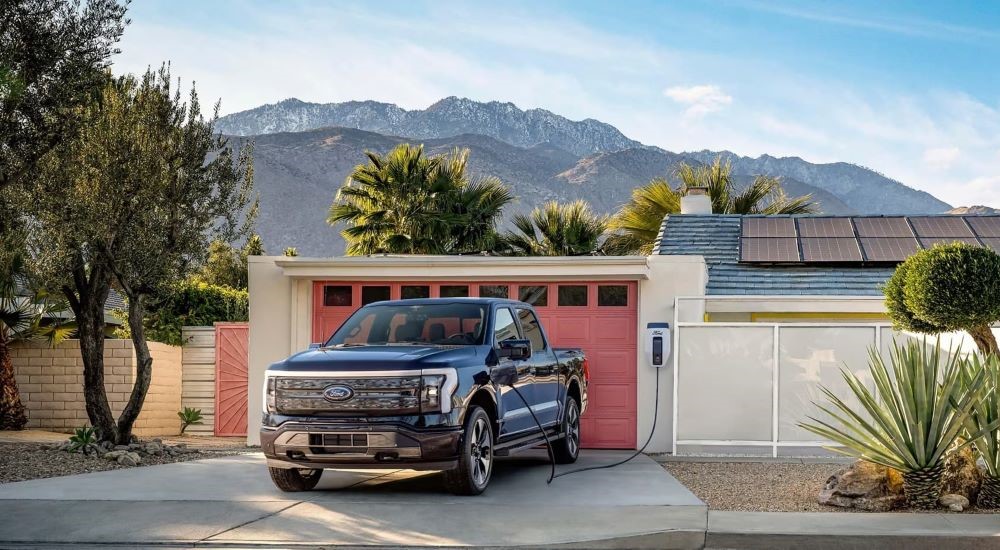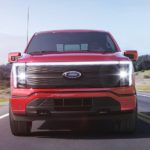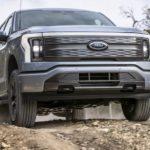There’s a first time for everything—there’s no exception to this rule. Doing something new for the first time in your life can cause mixed feelings, including but not limited to confusion and uncertainty. Why do I mention this? You’re here because you want to know more about the new Ford Lightning for sale that you heard about recently. If you’ve never owned an EV before, it’s no surprise you have some questions—or at the least, you’re looking for assurance as to why the F-150 Lightning would be a great place to start.
First, let me clarify: the F-150 Lightning is a fantastic place to start if you’ve never owned an EV, but there’s a catch. The F-150 Lightning is a great EV, but for those who showed no interest in the gasoline-powered F-150 or any other pickup truck, it may be harder to convince them that their first EV should be a pickup truck.
However, if you want a truck and specifically want an EV, there aren’t too many options at the moment. Among those currently on the market, the F-150 Lightning is the best choice in many ways. For those who’ve owned a truck with either a diesel- or gasoline-powered engine and want to dive into the world of EVs, if you are primarily a pickup truck driver, you may have been waiting for the right time to jump in.
The 2023 F-150 Lightning is that moment you’ve been waiting for, but if you need more convincing, then keep reading for a rundown…
No Worries About Accessibility
One of the first things you and I should discuss is accessibility. More specifically, let’s discuss how the industry—and even large parts of the world—have begun to cater heavily to hybrids and EVs. What do I mean by this? Before plug-in EVs became mainstream, the select drivers who were consumer pioneers had few options for recharging their cars in public.
Depending on where you live today, you might have a gas station on nearly every block; often, the only time a gas station closes down in my neck of the woods is because they’re turning it into a larger and more complex station, akin to Wawa in the Tristate Area or Cumberland Farms in the Northeast. Gas stations are going nowhere, but that doesn’t mean EVs like the F-150 Lightning are left in the dust.
If you were on the fence about EVs because you’re worried about running out of battery in the middle of the highway, this fear is becoming less and less likely. Charging stations are not only appearing in places where other vehicles fuel up—rest stops, gas stations, etcetera—but since gasoline isn’t involved, some cities and towns have opted to place EV charging stations in places where you won’t find a fuel pump.
For example, some shopping centers and grocery stores have begun installing EV chargers in their parking lots—which, if you think about it, is likely the best quality-of-life feature to present itself in decades. For many, going to the gas station is another errand; however, if you have an EV, your favorite store will—or one day will likely—allow you to recap the battery charge in your EV while you’re doing your other errands.

Improved Performance
It’s impressive when you think about it: something as large as a pickup truck running solely on electricity, hauling cargo, and lasting for hundreds of miles on a single charge… If you haven’t seen much of what the F-150 Lightning is capable of, you may be skeptical. Understandably so. How can a pickup truck that runs on electricity remotely come close to one that’s running on gasoline or even diesel?
Doesn’t matter how—the F-150 Lightning not only comes close to the F-150 in many ways, but your F-150 Lightning can be more powerful than a gasoline-powered F-150.
Those showing interest in the F-150 Lightning are likely well aware of the premium cost over the gasoline-powered F-150. With that said, how does the base gas-powered F-150 match against the entry-level F-150 Lightning?
The standard gasoline-powered F-150 has a 3.3L V6 engine paired with a ten-speed automatic transmission. This combo gives America’s best-selling vehicle 290 hp and 265 lb-ft of torque in its base form, along with a towing capacity of 8,200 lbs and a payload capacity of 1,955 lbs. As for the F-150 Lightning, its base powertrain is two electric motors and a 98-kWh battery; paired with this is a Continuously Variable Automatic Transmission (CVT), so driving the F-150 Lightning is smoother than any gasoline-powered F-150 ever could be.
The base F-150 Lightning creates 452 hp and 775 lb-ft of torque, which is nearly 56% more horsepower than the base F-150 and an earthshattering 192% more torque. The base F-150 Lightning also tows 7,700 lbs with Extended Range and 5,000 lbs with Standard Range, which are impressive amounts considering the size of the battery. The towing capacity is a bit lower than the base gasoline-powered F-150, but the payload capacity of 2,235 lbs of the base F-150 Lightning outmatches the 1,955 lbs from the 3.3L V6 engine. And both the F-150 Lightning’s powertrains utilize an all-wheel drivetrain, while the F-150 models typically come with rear-wheel drive.
The 98-kWh battery doesn’t tell the full story of what the F-150 Lightning is capable of. The pricier—but well worth it—131-kWh Extended Range powertrain increases the F-150 Lightning’s power output to 580 hp and 775 lb-ft of torque. Compared to the turbocharged 2.7L V6 engine, which is popular (albeit a pricier powertrain over the base 3.3L V6 engine), the 131-kWh battery powertrain has 78% and 94% more horsepower and torque, respectively, than the 325 hp and 400 lb-ft of torque of the turbocharged 2.7L V6 engine. Best of all, its towing capacity of 10,000 lbs is not only the most this electric-powered truck can tow, but it’s nearly identical to the 10,100 lbs the turbocharged 2.7L V6 engine can tow.
One Charge and You’re Ready to Go
If you had to charge your truck every time you were going to run to the store, that would be annoying and would make the prospect of electric vehicles nowhere as enticing. With the F-150 Lightning, your electric pickup can handle long trips and extensive ranges on single charges.
There are a few types of chargers, including the DC Fast Charging stations you’ll find around the country, including those of the BlueOval Charge Network (over 80,000 Ford-sponsored charging stations). The more basic at-home charging unit will take some time for each charge, so if you’re buying an F-150 Lightning and it’s your first EV, you should consider having a technician install your charging unit, whether that’s on the side of your house, inside your garage, etc.
The Ford Charge Station Pro is well worth the investment, and it comes with the purchase of an F-150 Lightning with an Extended Range battery. This charger can charge the F-150 Lightning’s battery from 15% to 100% in only eight hours, compared to the 20 hours it takes with the Mobile Power Cord. How far will your F-150 Lightning travel on a single charge? With the Standard Range powertrain, you’ll get a full 240 miles of travel; with the Extended Range powertrain, you’ll get 320 miles—a rise of 33%.

Don’t Be Nervous! Try It Out!
Electric vehicles are becoming the new normal for millions of drivers now that they’re a more accessible means of transportation. Driving EVs aren’t what they used to be; manufacturers now give equal amounts of time, money, and manpower to the proper research and development of these vehicles. This means driving an EV now has more benefits to the driver than simply reducing their carbon footprint, because everything around the electric powertrains has become so advanced as of late.
With today’s EVs, you can rid yourself of gasoline-powered vehicles for the first time in your life—and with the F-150 Lightning, it’s a great place to start because it’ll convince you that, if this is where we’re at by the mid-2020s, then the future is of the automotive industry is looking particularly bright.



